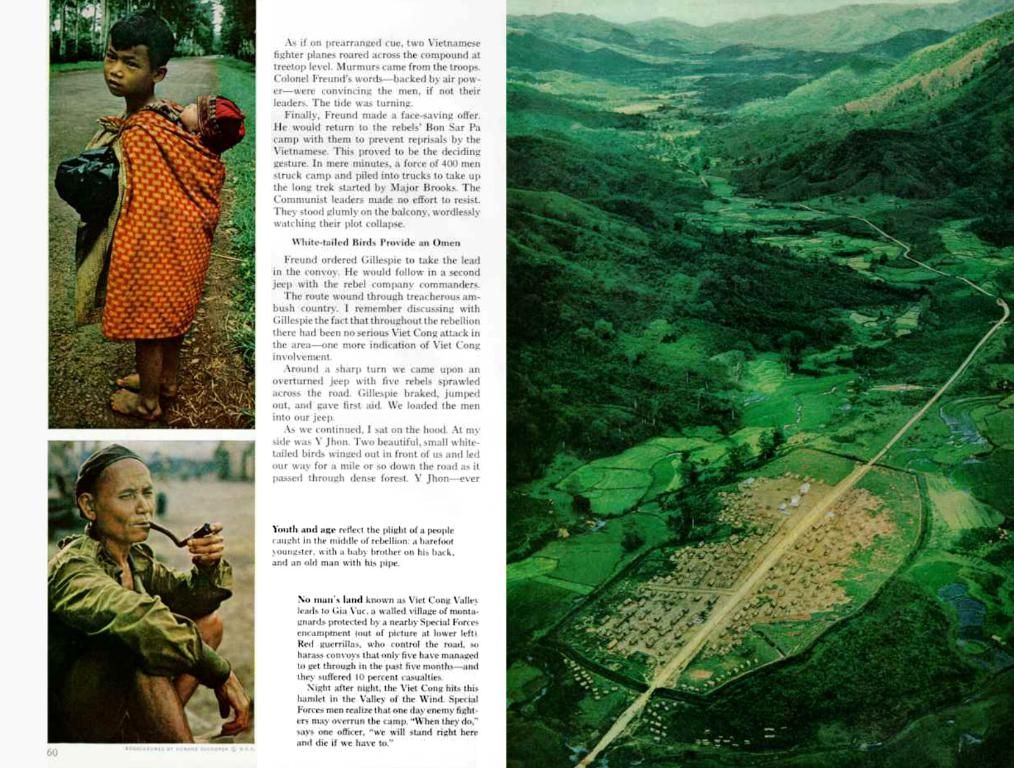Rising Beavers: Navigating the Beaver-Agriculture Conundrum in Lower Saxony
- *
Farmers grapple with beaver resurgence, citing damage to crops and infrastructure - Beaver comeback stirs disputes among farmers
The resurgence of the beaver population in Lower Saxony has stirred up a dilemma for farmers, particularly in regions like Pattensen, south of Hannover. Notably, farmer Hans-Heinrich Schnehage, unable to farm certain lands due to permanent flooding caused by the beavers, advocates for a statewide beaver management strategy that offers compensation for farmers grappling with the consequences.
"Beaver conservation should not overshadow agriculture," asserted Sonja Markgraf, spokesperson for Landvolk Niedersachsen, to the German Press Agency (dpa). "We're eager to see more proactivity on the beaver management front."
Christian Meyer, Lower Saxony's Minister for the Environment, has announced a beaver strategy for the second half of 2025. Key elements of the upcoming strategy include the engagement of beaver experts across the state. Meyer acknowledges the return of the beaver to Lower Saxony as a triumph for species protection, stating that the beaver provides essential input for ecological water development, supports water retention, and fosters habitats for numerous endangered fish species. Meyer reinforces the (nearly) overwhelmingly positive (90%) impact of beavers on the water balance. Nevertheless, the impending beaver strategy will also address issues and disputes.
The ministry estimates the current beaver population to be between 500 to 1,000 animals. About two centuries ago, the beaver was on the brink of extinction in Lower Saxony. According to the Nature Conservation Union (NABU) Lower Saxony, the first beaver was spotted in the Hannover region in 2005. Since then, in 2012, the earliest reports of fields and meadows being flooded by beavers began, with 229 beaver territories and around 430 to 500 individual animals recorded in the 2019 statewide count. The Hannover Ministry of the Environment currently estimates the population to be between 500 to 1,000 animals. The next count is due to commence at year's end.
Most beavers in Lower Saxony dwell in the Biosphere Reserve Elbtalaue. Along the Elbe, Leine, in the Aller-Oker-Drömling area, and in Emsland, the rodents have settled.
Having received an exchanged area from the Hannover region for one of his waterlogged fields, Farmer Schnehage now hosts water buffaloes. "I don't fault the beaver," Schnehage shares. "The beaver isn't malicious, it doesn't ravage my sheep or anything like that." Statewide solutions, however, are indispensable, given the needs of citizens, businesses, municipalities, or water associations. The state has launched a "Round Table Beaver" to address these issues.
Generally, beavers, as waterbuilders, contribute positively to the natural landscape. However, along the Hunte river in Oldenburg, the protected beavers are potentially endangering dike safety through their structures. In response, the Lower Saxony Landesbetrieb für Wasserwirtschaft, Küsten- und Naturschutz (LNWKN) has intervened. This year, as in 2024, the floodwater level in segments of the Hunte will be diminished to survey the constructions of beaver and nutria. Additionally, softwood removal aims to lessen the area's appeal to beavers by reducing food supplies.
Unlike the stringently protected beavers, the smaller water dwellers nutria and muskrats may be hunted. According to the Ministry of the Environment, around 45,000 nutrias were eliminated during the hunting year 2023/2024, representing an increase of roughly 30% compared to the preceding year.
- Lower Saxony
- Hannover
- Advance
- Pattensen
- Christian Meyer
- BMU
Note: Although specific information about Lower Saxony's current beaver management, including farmer compensation and conflict resolution, wasn't found in the available data, it is likely that authorities there are devising solutions that balance ecological goals with agriculture's needs. This could involve collaborative efforts among stakeholders, such as farmers, conservationists, and government agencies, to create effective management strategies.
- The ongoing beaver conservation in Lower Saxony, a significant environmental concern, is set to be addressed by Christian Meyer, Lower Saxony's Minister for the Environment, in the second half of 2025.
- The resurgence of the beaver population in Hannover, particularly in Pattensen, has led to a pressing need for a beaver management strategy that offers compensation to farmers like Hans-Heinrich Schnehage, impacted by the consequences of the beaver's activities.
- As the beaver population increases in Lower Saxony, with regions like the Biosphere Reserve Elbtalaue becoming home to many beavers, it is crucial for policy and legislation to advance, balancing ecological goals with agriculture's needs.








